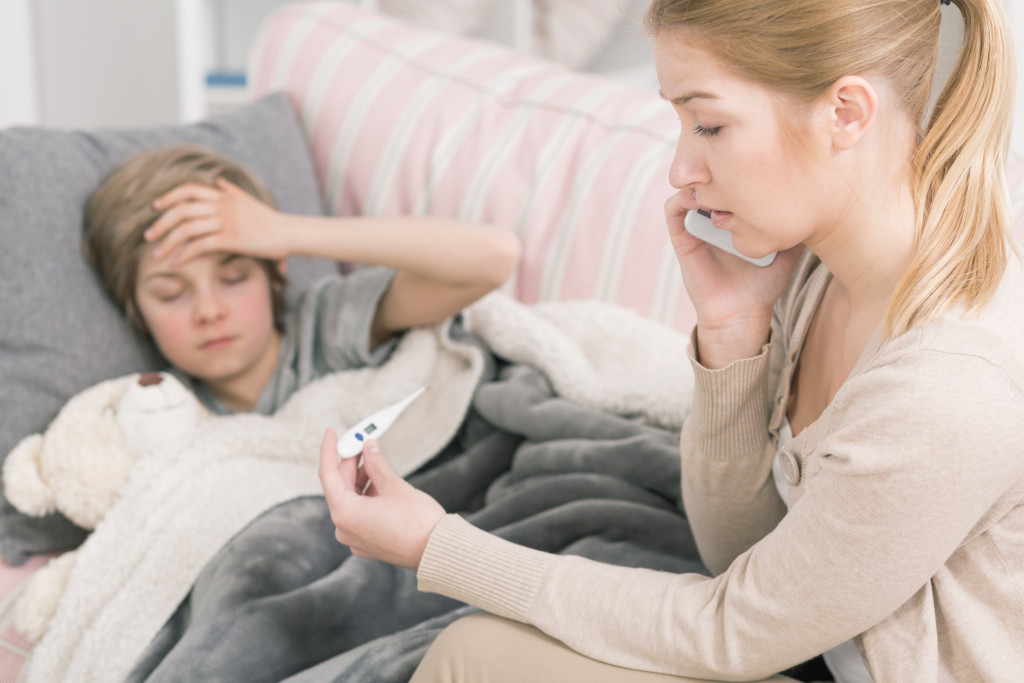- Understand different family health emergencies and recognize their signs.
- Take immediate action in an emergency, such as calling for help and following first aid procedures.
- Prepare and equip a family health kit with essential items like bandages, antiseptics, pain relievers, etc.
- Benefit from walk-in clinics for non-life-threatening medical issues.
- Develop a comprehensive family emergency plan, including an emergency contact list and home safety measures.
You never know when a health emergency will strike your family. From sudden fevers to accidental injuries, being unprepared can not only be stressful but also detrimental to the well-being of your loved ones. This guide is dedicated to helping you navigate family health emergencies with a clear plan and peace of mind.
Understanding Family Health Emergencies
One of the first steps in tackling a family health emergency is determining the type of emergency. It can be anything from a minor cut to an allergic reaction, so it’s essential to understand the severity and take action accordingly.
Recognizing Common Health Emergencies
Different emergencies demand distinct responses. Some common ones include choking, high fevers, severe allergic reactions, and fractures. It would be best if you familiarized yourself with signs like difficulty breathing, unresponsiveness, and severe pain. Recognizing these signs early can make all the difference.
In addition, it’s essential to know the medical history of each family member. In a health emergency, being aware of any underlying medical condition can assist in assessing the situation and deciding on appropriate treatment.
Immediate Actions to Take

Once you’ve identified a health emergency, remain calm. Call emergency services if needed, and always ensure the safety of the affected person and those around them. Follow any immediate first aid procedures you know. Your timely action can prevent complications and, in some cases, even save lives.
Preparation and Resources
Once you’ve reacted to a health emergency, it’s time to focus on preventative measures. Preparation is vital when it comes to family health.
Creating an Emergency Health Kit
Prepare a kit with bandages, antiseptics, pain relievers, a thermometer, and allergy medications. Regularly check the expiration dates and replace used or outdated items. This kit will give you the tools to promptly address minor emergencies.
Benefits of a Walk-in Clinic
In non-life-threatening situations, a walk-in clinic can be a godsend. These clinics offer quick medical attention without the need for prior appointments. They can handle various issues, from cuts and burns to minor infections, providing a valuable resource when your regular doctor is unavailable.
Developing a Family Emergency Plan
Emergencies are less daunting when you have a plan. A well-thought-out strategy can reduce panic, speed up response time, and save lives. Here’s how you can create a practical family emergency plan:
Emergency Contact List:
- Draft a comprehensive list of all essential numbers.
- Include local medical facilities, poison control, family contacts, and neighbors.
- Ensure this list is accessible to all family members, perhaps even saved on their mobile phones.
Home Safety and Escape Routes:
- Chart out multiple escape routes from different parts of your home to cater to fires or other contingencies.
- Discuss safe meetup points outside the house, ensuring they’re easy to locate, even for younger family members.
- Consider installing smoke alarms and fire extinguishers in key areas of your home.
Education and Drills:
- Familiarize each family member, including children, with basic emergency procedures and how to dial emergency numbers.
- Schedule regular drills simulating different emergencies to ensure everyone remembers the plan. This not only helps in recall but can also expose any weaknesses in your strategy.
Communication:
- Inform close neighbors or friends about your emergency plans. They can be crucial first responders or help alert authorities if you cannot.
- Consider investing in walkie-talkies or similar communication tools in case cell phone networks are unavailable.
First Aid and CPR Training:

- Take basic first aid and CPR courses as a family.
- Knowledge of handling choking, administering CPR, or dressing a wound can be lifesaving.
Special Needs and Considerations:
- Account for family members with special needs, older people, or pets.
- Ensure your plan caters to their specific requirements, from medication lists to mobility aids.
Review and Update:
- Regularly review your plan to account for changes, such as a new family member, a moved residence, or updated emergency numbers.
- An annual review ensures that your plan remains relevant and practical.
Wrapping Up
Being prepared for health emergencies is an act of love and responsibility. By understanding potential risks, having the necessary resources on hand, and devising a clear plan, you ensure the safety and well-being of your family. Take the steps today, and you’ll navigate future emergencies with confidence and care.


